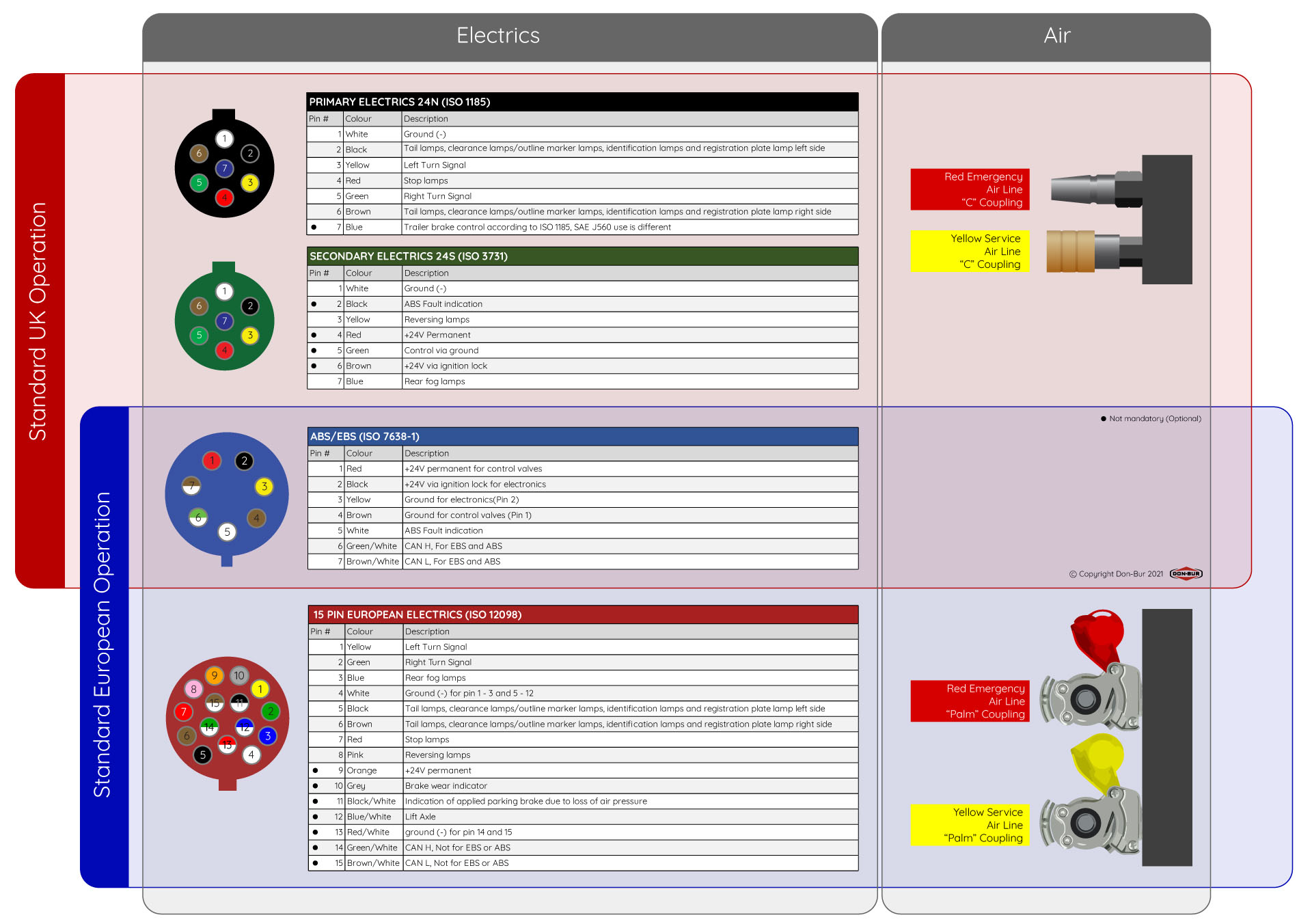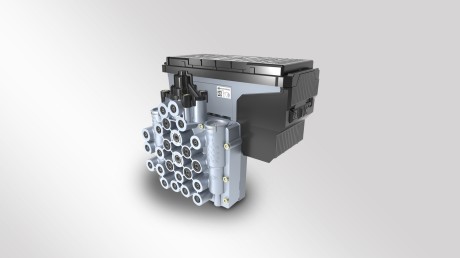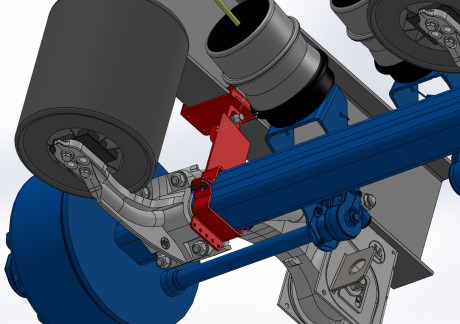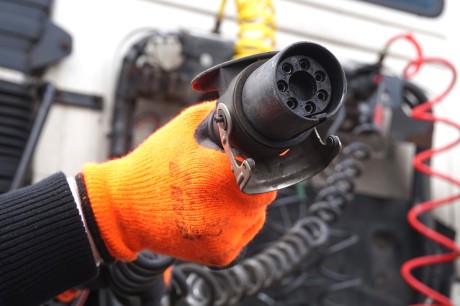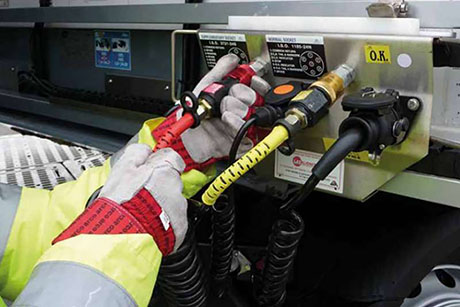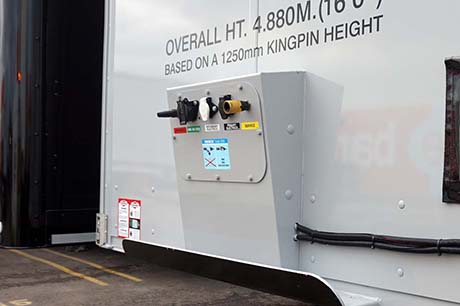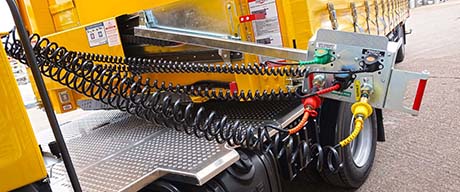Most responsible operators will understand that correct coupling from tractor to trailer is critical to the safe operation of the trailer and that compliance is key to avoiding accidents and/or PG9 prohibitions but do all drivers actually do it right?
The legal stance is that all employers, owners and managers, under health and safety law, have a responsibility to provide and maintain safe systems of work, and to take reasonable and practicable precautions to ensure the health and safety of all workers and members of the public who may be affected by their activities. They should ensure that safe systems for coupling and uncoupling vehicle combinations are understood, and procedures are in place to check that these are followed. Equally, all drivers (including self-employed) have a responsibility for their own health and safety and that of other people who could be affected by their actions
Regrettably, although most drivers understand that they need to plug in their coupling 'suzie' lines as part of the correct coupling process, some may have little comprehension of what each one does when they connect them correctly or, more importantly, what would happen if they didn't.
With more drivers now coming in from Europe to offset the current driver shortage, we must also factor in that a European driver considering the couplings on the front of a UK trailer will be looking at something quite different from what they are used to.
So why is this so important?
Unfortunately, to move a trailer from A to B, you don't actually need to plug any couplings in. At worst, a driver could press the shunt valve on the trailer and pull a 36 tonne dead weight behind them with absolutely no trailer controls whatsoever. This doesn't mean that a driver will deliberately avoid connecting a line, however it does present a scenario where the trailer could move freely where a connection is unintentionally disconnected. "But wait" I hear you ask. Doesn't the driver check the trailer during their walk round? Doesn't the cab ABS warning highlight an incorrect coupling? Well, in short, maybe and possibly.
A driver should walk round the vehicle ensuring that all lights are working. Commonly though, this isn’t always practical if they’re on their own and they don’t have a fancy self-test key fob to press while they’re checking. Before pulling away, they should also monitor their dashboard and act appropriately if they note any warning lights. However, some tractor units don’t necessarily detect certain trailer issues and won’t result in a dashboard lit up like a Christmas tree.
The infographic shown is a guide to the main air and electric couplings in either the UK or in Europe. The red emergency and yellow service lines supply the braking system whilst the primary 24N and secondary 24S (UK only) electric couplings provide power to the trailer lighting. In Europe, the 24N and 24S are replaced by the 15 pin ISO 12098 connection.
What is less understood is the ISO 7638 connection; commonly known as the ABS or EBS line which provides power and data to the trailer ECU (the trailer’s brain). Most will recognise the familiar ABS acronym relating to anti-lock braking but what they don’t necessarily realise is what else it does. The ISO 7638 provides fast, electrical braking response time where, by default, it must rely on the slower, pneumatic signal speed. The ECU also calculates information about trailer weight (load sensing) so that braking is proportionate and doesn’t result in trailer brakes locking up when carrying a light load. In addition, the ECU controls the trailer roll stability system (RSS) to prevent roll-overs at roundabouts or bends. The last main function of the ABS/EBS line and ECU is to ensure the trailer suspension operates correctly at ride height; irrespective of payload weight. Suspension height becomes extremely important when you’re driving a 16’3” high double deck under 16’6” clearance bridges. You can understand then, that this connection is critical. In May 2002, in an amendment to regulation 18 of The Road Vehicles (Construction and Use) (Amendment) (No.4) Regulations 2001, the use of an ISO 7638 connection where an ISO socket is present on both the tractor and trailer, was made mandatory.
Interestingly, and perhaps most worrying, is that there is increasing evidence to suggest that the ISO 7638 is far too often left disconnected in transit. There are several possible reasons; the most common relates to the fact that the sockets on each end of the ISO 7638 line are identical. While this doesn’t initially seem to be problematic, you have to consider that when the trailer is uncoupled, the driver stows the loose (trailer) end on the tractor unit in a “dummy” socket. It is now well-documented that drivers can pick up the wrong “live” socket off the tractor unit and plug that into the trailer. The result? A line that appears visually correct but isn’t providing power or data to the trailer ECU.
Interestingly, there is also evidence to suggest that routine can replicate problems. The end of any coupling line that has been handled more will tend to be a little cleaner than the other end that remains fixed to the tractor unit. If the wrong end of the ISO 7638 line has been coupled previously, the next driver to couple up could be forgiven for thinking that the cleaner end is the one you plug into the trailer; especially if it’s dark and raining.
Other reasons for a failed ISO 7638 coupling include blown fuse(s), old and fatigued Suzie cable or damaged plug/socket pins.
Don-Bur does offer an aid to this issue in the form of their EBS-Safe product which alerts the driver by triggering an audio/visual alarm in the event that the ISO 7638 line is not connected when the others are.
Do your drivers get coupling training? That’s doubtful as it’s part of the HGV class 1 training/test and most company drivers are assessed prior to working for an operator. However, does the same apply to agency drivers? Are you confident they understand the importance of correct coupling?
Fun fact: Did you know that the term “Susie” relating to coupling coils is a trade mark owned by Unipart and originates back to the old Slinky toy, “Susie, the Lovable Slinky Worm”?
We’d love to hear from you – get in touch today!

